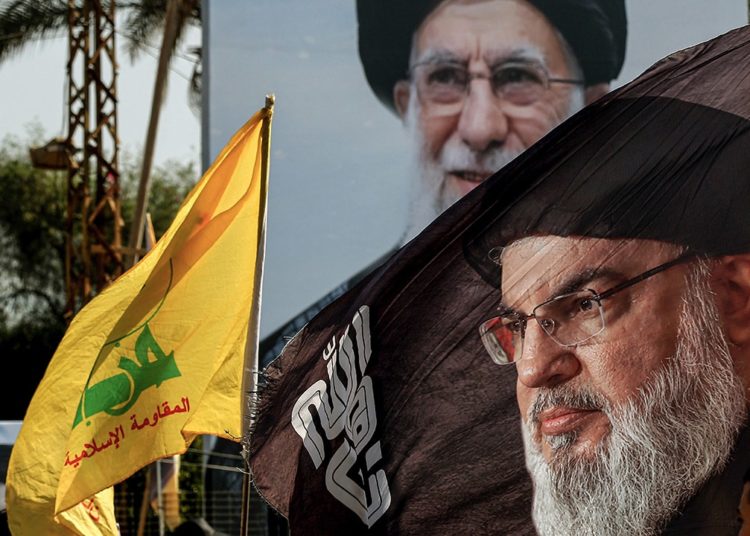In the five weeks since the Trump administration stepped up attacks on the Iran-backed Houthis in Yemen, a few big problems have become apparent, underscoring just how hard it is for U.S. President Donald Trump to turn muscular rhetoric into real-world results.
The operation, famously debated in a Signal chat that mistakenly included a journalist, has failed so far to achieve either of its two stated goals: restoring freedom of navigation in the Red Sea and reestablishing deterrence.
Shipping through the Red Sea and the adjacent Suez Canal remains as depressed as ever despite a more than $1 billion U.S. onslaught against the Houthis. And the militants remain as defiant as ever, warning over the weekend that Trump has waded into a “quagmire” and intensifying their own attacks on Israel and U.S. warships in the region.
There has also been a glaring lack of transparency about the operation, the biggest exercise of U.S. military power in Trump’s second term. The Defense Department does not hold briefings on the ongoing war, and U.S. Central Command, which oversees operations in the Middle East, merely posts snazzy videos of flight-deck operations on social media, accompanied by the hashtag “#HouthisAreTerrorists.”
More alarmingly, the tempo of U.S. operations, including around-the-clock strikes by two entire U.S. aircraft carrier strike groups, is burning through finite precision munitions that many defense experts say would be best husbanded for any future conflict with China. That’s especially important when it comes to the limited stock of stand-off, air-launched missiles that would be critical to any fight over Taiwan.
“If this is about freedom of navigation, it isn’t working,” said Alessio Patalano, a naval expert at King’s College London. He added: “How can you support the idea that the Indo-Pacific is the priority, and yet absolutely critical components to the Indo-Pacific fight are being pulled for operations in the Middle East?”
The good news, such as it is, is that there is less urgency now to reopen the Red Sea and the Suez Canal to commercial shipping than at any time since the Houthis essentially closed it in November 2023 with a wave of missile and drone attacks on commercial vessels, nominally done in support of Palestinians under Israeli assault. Trump’s trade war has so depressed the outlook for global shipping that rates for container ships are plummeting, and there is little reason for shippers to worry about rerouting their goods the long way around the bottom of Africa.
When the Houthis first opted to use their strategic position on the shores of one of the world’s critical chokepoints, the Bab el-Mandeb strait, to bring pressure on Israel and the West, the West responded. The United States and the United Kingdom sent naval forces to hammer the Houthis, while the European Union sent its own naval task force to help shepherd commercial ships through what was quickly becoming a no-go zone.
Though the U.S.-U.K. and European missions had slightly different aims—the Anglo-Americans sought to “degrade” Houthi capabilities on land to interdict commercial traffic, while Europe’s operation hewed closer to a traditional freedom-of-navigation operation—both were of little avail. Insurance rates remained sky-high, and traffic through the Suez Canal plunged.
Enter the new Trump administration, determined to prevail where the outgoing Biden administration had failed.
“This [is] not about the Houthis,” embattled U.S. Defense Secretary Pete Hesgeth wrote in the now-infamous Signal chat he and his colleagues shared with a journalist in the days and hours before and during the March attacks on the Houthis. “I see it as two things: 1) Restoring Freedom of Navigation, a core national interest; and 2) Reestablish deterrence, which [President Joe] Biden cratered,” Hesgeth wrote.
The idea that freedom of navigation was a core U.S. national interest got pushback from Vice President J.D. Vance during the Signal conversation. And everybody on the Trump national security team wanted to ensure that Europe would somehow pay for the unrequested U.S. military adventure. Centcom certainly believes that it is all about the Houthis.
But the underlying contradictions in U.S. policies and priorities shone through the clumsy text messages. Most especially: What happened to the pivot to Asia?
“The United States Navy is very good at striking targets ashore. But the operational and tactical success cannot hide the fact that the strategic effect remains elusive, if not ill-defined altogether,” Patalano said. “If this is meant to deter the Chinese leadership vis-à-vis Taiwan, I am not sure it is doing it.”
The United States since the days of Thomas Jefferson has fought for freedom of navigation, sometimes in waters not far from the current fight. What is hard to understand right now is why it is spending treasure in a futile attempt to open a sea lane that doesn’t need opening, when there are other, more pressing challenges. Worse yet, the misapplication of sea power could rebound badly—it takes a lot of time and effort to convince democracies to pay vast sums for advanced warships that are needed and that do have great utility, just not this one.
“What I find most troubling is that they are undermining the ultimate utility of sea power,” Patalano said. “In the future, when people say, ‘Why do we need a Navy? We did nothing against the Houthis.’ And they will be right.”
The post Trump’s War on the Houthis Is Going Nowhere appeared first on Foreign Policy.




